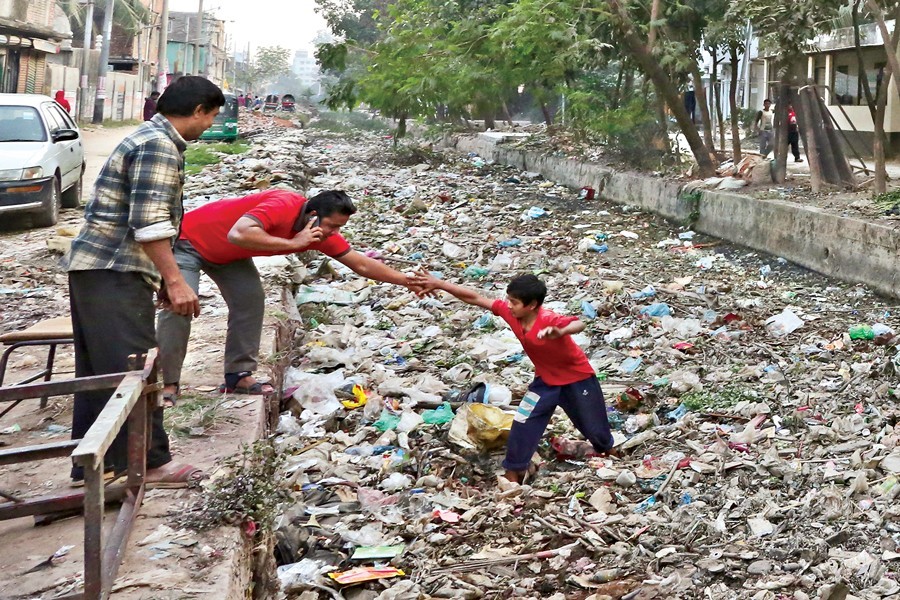From the South Asia's best utility provider to the best in Asia. This is the goal the Dhaka Water Supply and Sewerage Authority (DWASA) has set itself the task, according to report, of accomplishing by 2030. Already, as the claim goes, the DWASA is the best utility provider in terms of water supply in South Asia. If this is enviable, the service in terms of sewerage and sewage management leaves much to be desired. The sewerage network's coverage has come down to 20 per cent from 30 per cent evidently because the drainage system could not cope with the expansion of the city. It is really pathetic that the system can currently carry only 3.0 per cent of the domestic sludge. But what is extremely frightening is the fact that residents of Dhaka install septic tanks and soak wells to manage sewage or release it into open drains. Ultimately the sewage ends up in the rivers or water bodies around the city. No wonder, rivers and water bodies virtually turn into cesspools.
The grim picture thus painted can cause citizens and the authorities in the city a nightmare. But the DWASA now has come up with an ambitious master plan under which this neglected area can be taken care of. Costing $2.0 billion, the project envisages to turn the Pagla sewage treatment plant into a state-of-the-art unit and also to set up four more in different strategic locations of the city. The utility provider has found in the World Bank a willing financial partner in this task. What is particularly encouraging is that some initial works of a few plants have either been completed or in the process. Other financiers like the Asian Development Bank have also lent their support in building such facilities.
The treatment plants, if and when built, are expected to solve one of the nagging hygienic problems involving human solid waste now polluting the city's environment and the river water. But some experts are sceptic that the plants will be able to meet the deadline set at the year 2025 for completion. The Dasherkandi plant was planned in 2006 but only the groundwork is being done now. Hopefully, this time the task of building the plants will be taken up with all seriousness. The DWASA should live up to its promise considering the grave threat facing the city on account of a near non-functional sewerage system.
In this context, development of an efficient sewerage network is a prerequisite. Even a most advanced facility for sewage treatment would be of no help if the channels built for carrying the faecal sludge to the treatment plant does not properly function. Currently, the capacity of pipes and drains are more than frustrating. So, the network of sewerage has to be in place from the day one the plants go into operation. How far is the DWASA prepared for this? The entire exercise then has to be a sustainable one. Only then a practical solution to the problem of Dhaka's sanitation and hygiene can be found.


